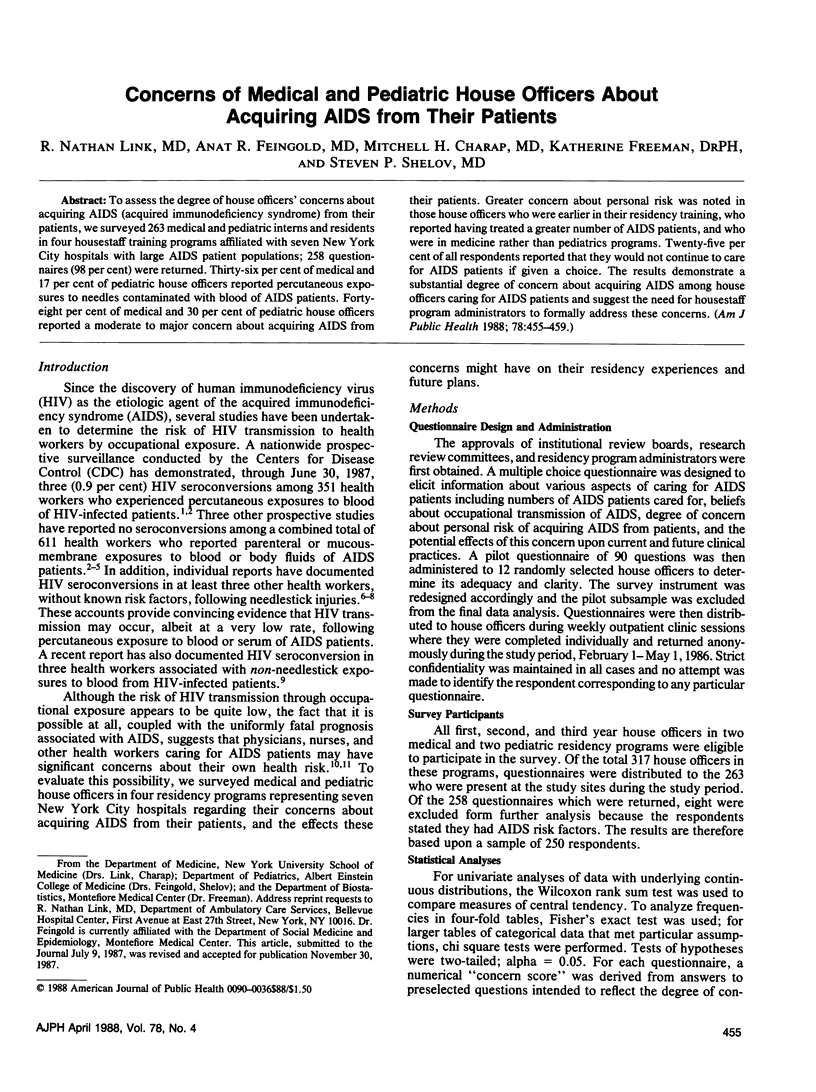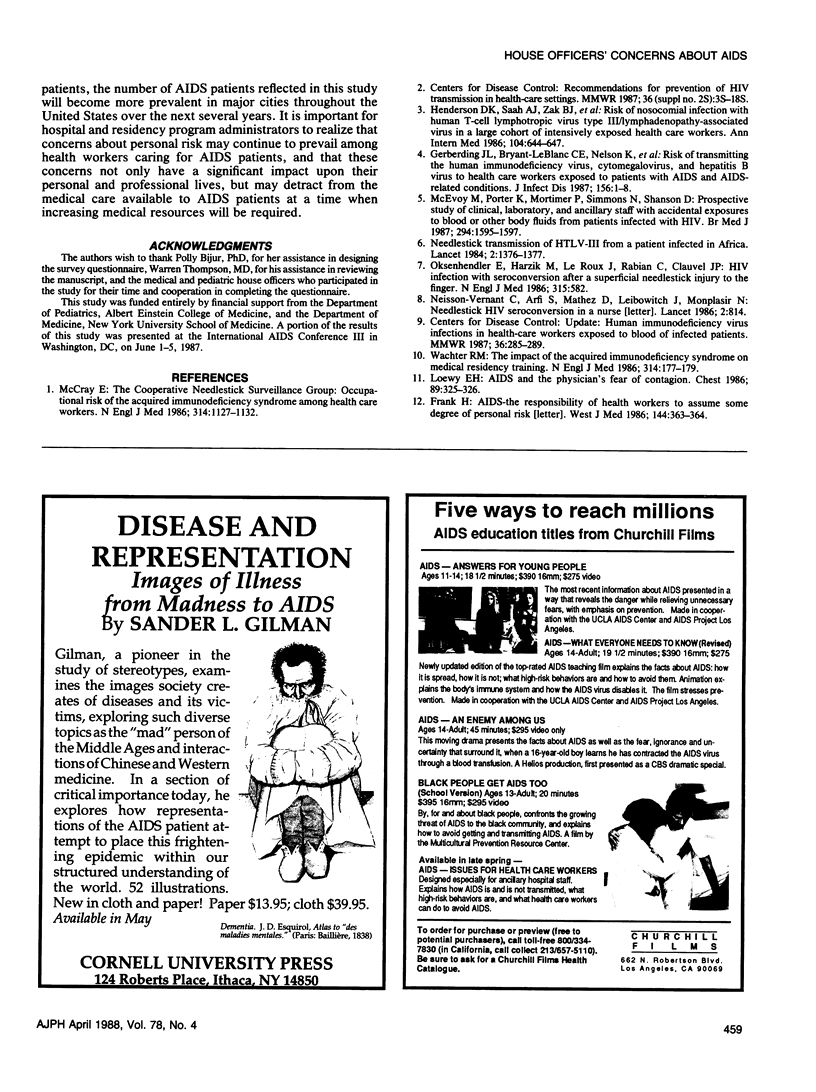Abstract
To assess the degree of house officers' concerns about acquiring AIDS (acquired immunodeficiency syndrome) from their patients, we surveyed 263 medical and pediatric interns and residents in four housestaff training programs affiliated with seven New York City hospitals with large AIDS patient populations; 258 questionnaires (98 per cent) were returned. Thirty-six per cent of medical and 17 per cent of pediatric house officers reported percutaneous exposures to needles contaminated with blood of AIDS patients. Forty-eight per cent of medical and 30 per cent of pediatric house officers reported a moderate to major concern about acquiring AIDS from their patients. Greater concern about personal risk was noted in those house officers who were earlier in their residency training, who reported having treated a greater number of AIDS patients, and who were in medicine rather than pediatrics programs. Twenty-five per cent of all respondents reported that they would not continue to care for AIDS patients if given a choice. The results demonstrate a substantial degree of concern about acquiring AIDS among house officers caring for AIDS patients and suggest the need for housestaff program administrators for formally address these concerns.
Full text
PDF




Selected References
These references are in PubMed. This may not be the complete list of references from this article.
- Frank H. AIDS--the responsibility of health workers to assume some degree of personal risk. West J Med. 1986 Mar;144(3):363–364. [PMC free article] [PubMed] [Google Scholar]
- Gerberding J. L., Bryant-LeBlanc C. E., Nelson K., Moss A. R., Osmond D., Chambers H. F., Carlson J. R., Drew W. L., Levy J. A., Sande M. A. Risk of transmitting the human immunodeficiency virus, cytomegalovirus, and hepatitis B virus to health care workers exposed to patients with AIDS and AIDS-related conditions. J Infect Dis. 1987 Jul;156(1):1–8. doi: 10.1093/infdis/156.1.1. [DOI] [PubMed] [Google Scholar]
- Henderson D. K., Saah A. J., Zak B. J., Kaslow R. A., Lane H. C., Folks T., Blackwelder W. C., Schmitt J., LaCamera D. J., Masur H. Risk of nosocomial infection with human T-cell lymphotropic virus type III/lymphadenopathy-associated virus in a large cohort of intensively exposed health care workers. Ann Intern Med. 1986 May;104(5):644–647. doi: 10.7326/0003-4819-104-5-644. [DOI] [PubMed] [Google Scholar]
- Loewy E. H. AIDS and the physician's fear of contagion. Chest. 1986 Mar;89(3):325–326. doi: 10.1378/chest.89.3.325. [DOI] [PubMed] [Google Scholar]
- McCray E. Occupational risk of the acquired immunodeficiency syndrome among health care workers. N Engl J Med. 1986 Apr 24;314(17):1127–1132. doi: 10.1056/NEJM198604243141729. [DOI] [PubMed] [Google Scholar]
- McEvoy M., Porter K., Mortimer P., Simmons N., Shanson D. Prospective study of clinical, laboratory, and ancillary staff with accidental exposures to blood or body fluids from patients infected with HIV. Br Med J (Clin Res Ed) 1987 Jun 20;294(6587):1595–1597. doi: 10.1136/bmj.294.6587.1595. [DOI] [PMC free article] [PubMed] [Google Scholar]
- Neisson-Vernant C., Arfi S., Mathez D., Leibowitch J., Monplaisir N. Needlestick HIV seroconversion in a nurse. Lancet. 1986 Oct 4;2(8510):814–814. doi: 10.1016/s0140-6736(86)90338-7. [DOI] [PubMed] [Google Scholar]
- Oksenhendler E., Harzic M., Le Roux J. M., Rabian C., Clauvel J. P. HIV infection with seroconversion after a superficial needlestick injury to the finger. N Engl J Med. 1986 Aug 28;315(9):582–582. doi: 10.1056/NEJM198608283150912. [DOI] [PubMed] [Google Scholar]
- Wachter R. M. The impact of the acquired immunodeficiency syndrome on medical residency training. N Engl J Med. 1986 Jan 16;314(3):177–180. doi: 10.1056/NEJM198601163140310. [DOI] [PubMed] [Google Scholar]


